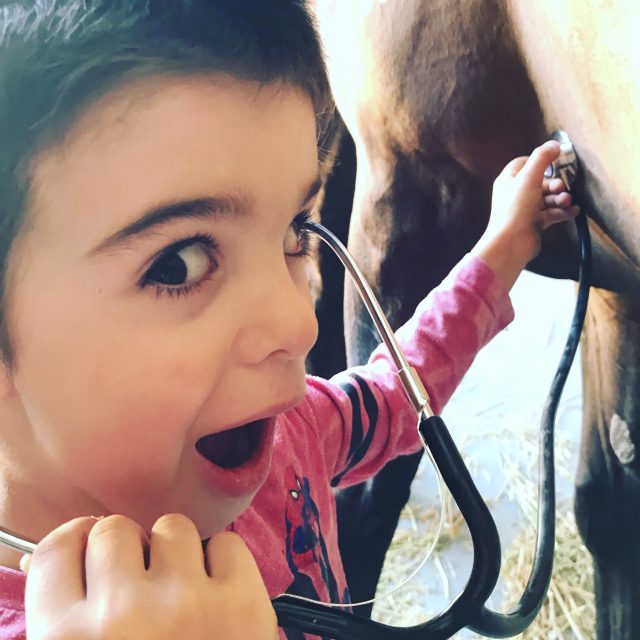Autism is a neurological condition
Autism is a neurological condition affecting three domains of everyday functioning: communication, behaviour patterns, and social functioning. All three areas of challenge must be present in order to receive an autism diagnosis; for example, ‘Client A’ is non-verbal; does not engage in social interactions; and hits his head repetitively hard against the wall when frustrated.
An autism diagnosis (in Australia) also comes with an associated ‘Level of functioning’ in regards to the capacity to operate in everyday life. Level 1 is needing the least amount of assistance to complete everyday tasks; Level 2, a moderate amount of assistance needed to complete every day tasks, and Level 3 needing high amounts of assistance to complete everyday tasks. Additionally, people may experience their environment in a way which results in either predominantly sensory seeking or sensory avoidant behaviour and every variation in between. Co-morbidity of diagnoses such as anxiety, depression, sensory processing disorder, intellectual disability are all common.
The sensory experience
Many persons on the spectrum are sensitive, intuitive, artistic, intelligent and loving individuals who go on to lead successful adult lives. However, during developmental years many children require intensive therapy to build independent functioning and capacity-building skills. For example, the simple internal urge indicating it is time to go to the bathroom is not felt or understood by a child on the spectrum who consequently soils themselves daily. The task of buttoning one’s own shirt is akin to a drunkard’s attempt to walk a straight line; a frustrating inability to make limbs behave; a maddeningly confusing gap between intent and outcome; further exacerbated by the itching sensation of the tag on the back of the shirt like a thousand mosquito bites on a razor edge line.
Haircuts can be a burning, searing head under lights that hurt eyes whilst in a vice like neck grip by a strange slippery curtain forced there by an even stranger person. Therapy during this important developmental time aims to equip the child with skills to communicate needs and wants, and to cope with internal and environmental stresses in an ordered and socially functional pattern. Building on the taught skills will equip the child to improve, create and attract favourable life outcomes for the adult years.
Well intentioned and traditional therapies are based on observable and evidence based outcomes, which although useful, do not account for personal differences. As progression is made in the understanding of persons challenged by an autism diagnosis, therapeutic interventions are evolving to provide prompt free and play based existential experiences which scaffold to a strengths based approach; such as equine experiences.
Equine experiences as a prompt-free therapy
Traditional therapy provides a prompt or expectation of behaviour in exchange for a desired reward. The effect of such an exchange is so profoundly negative to persons needing support that it even comes with its own category of dysfunction: prompt avoidance. Horses provide us and our clients with an expectation free experience that most people have never enjoyed. Horses have a measurable effect on our autonomic nervous system, slowing our heart beats down. Most people reading this article would have some familiarity with the range of equine activities and therapeutic experiences for client groups across many sectors.
Most applications endorse the positive benefits of fine and gross motor skills involved with mounting, riding, and ground work experiences which also equip clients with positive mental health experiences. Put together the effect on the autonomic nervous system of the client plus the physical activities and it is a well-known and potent therapeutic intervention.
Horses as an equal therapy partner
Horses: majestic, enthralling and present-sensed. A present-sensed being comes with no preconceived notions, expectations, and most importantly (within the context of our discussion), no mixed messages. The feedback a relaxed horse gives us about ourselves is the most clearly discernible and honest we could ever hope to receive. With this feedback nothing is expected or prompted for in return. Herein lies the power of a relaxed, lucid, equal therapy partner that is a horse under our guardianship. Instead of a therapy tool, our horse is our co-facilitator. Instead of a docile servant, our horse is our sensitive, reliable partner interacting with the freedom we share as a team to provide a space for exploration without requirement for something in return. Mastery and confidence follow; independent functioning and capacity building are natural consequences. This is the difference between traditional helping interventions and equine helping interventions. Liberty, guardianship and leadership are the difference between traditional equine assisted learning experiences and conscious horsemanship as practised at Autism Horses Australia. These powerful principles combined have resulted in an innovative and transformational program for specific-needs persons and therapy horses.
If you would like to be part of our upcoming 2021 limited release program for practice implementation, we invite you to make an inquiry today SMS ‘pilot’ to 0422 518 955 for an Information Brochure.








